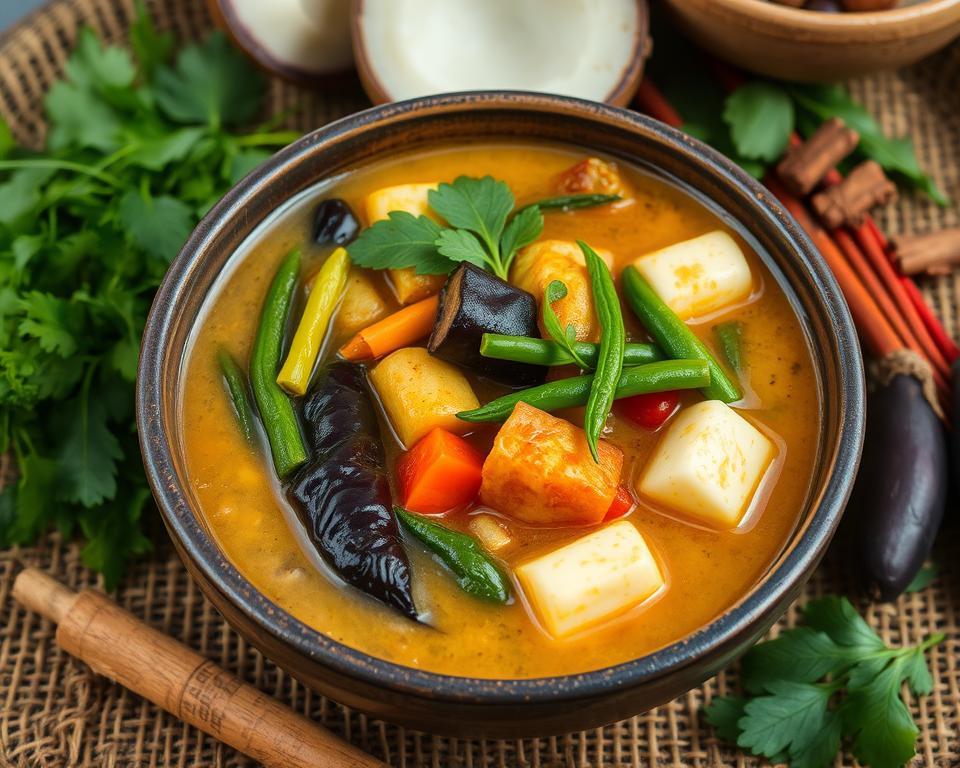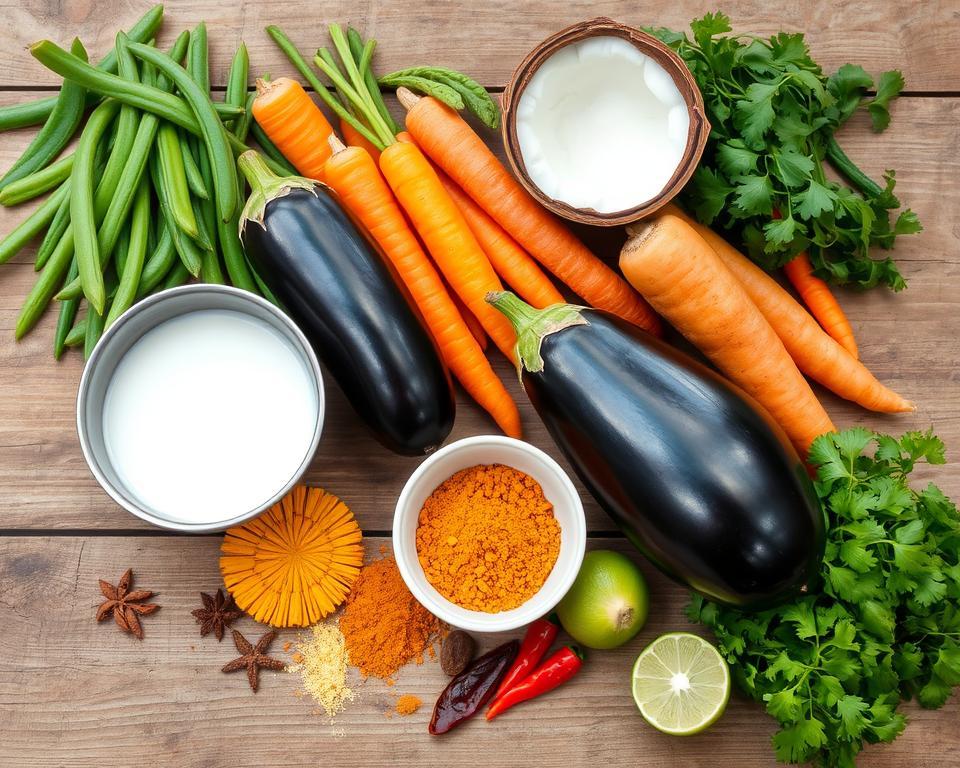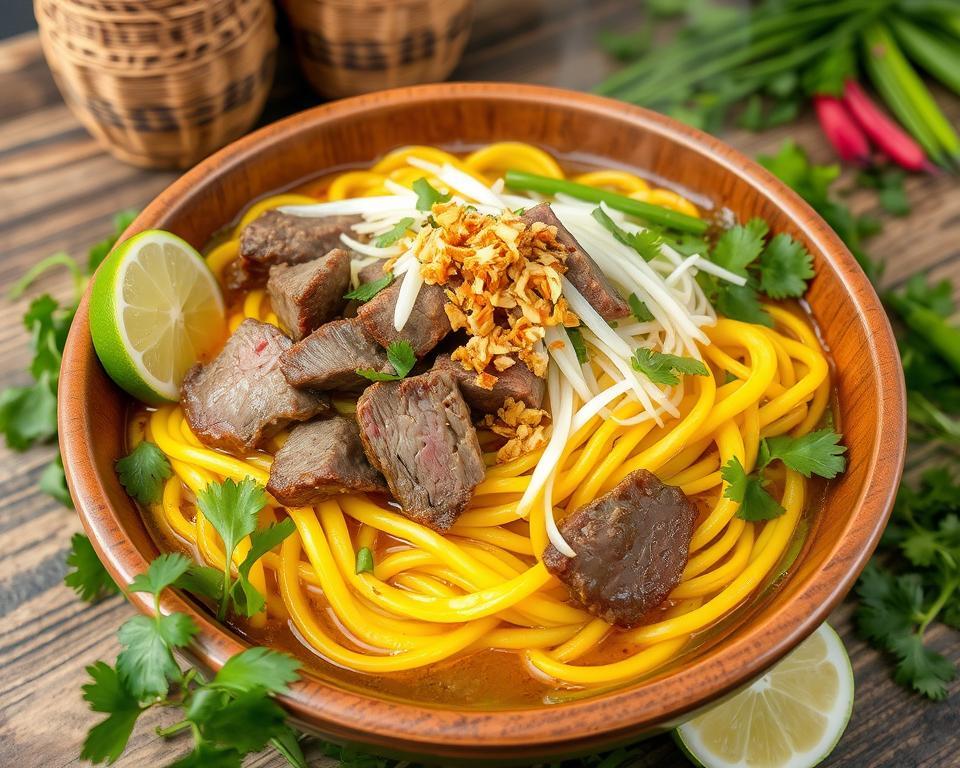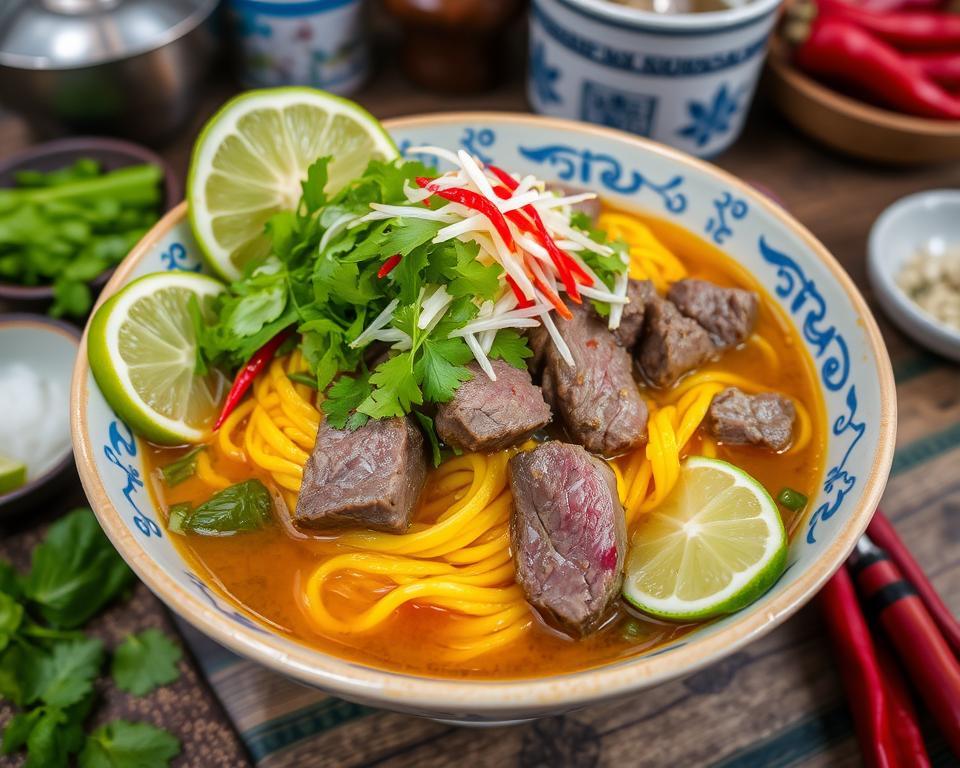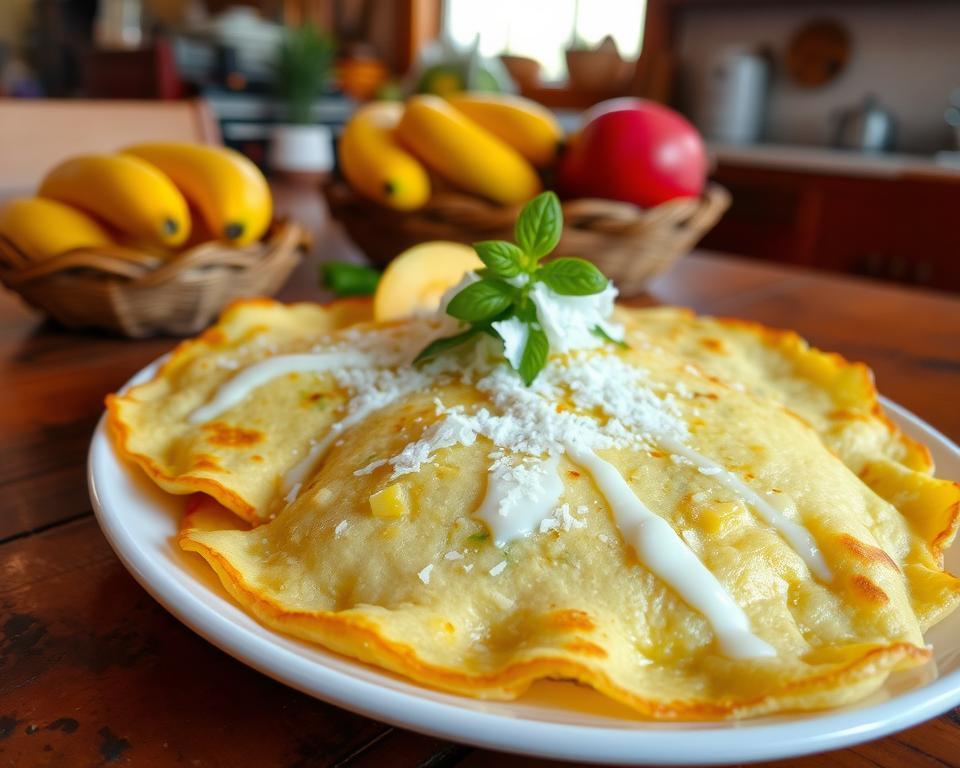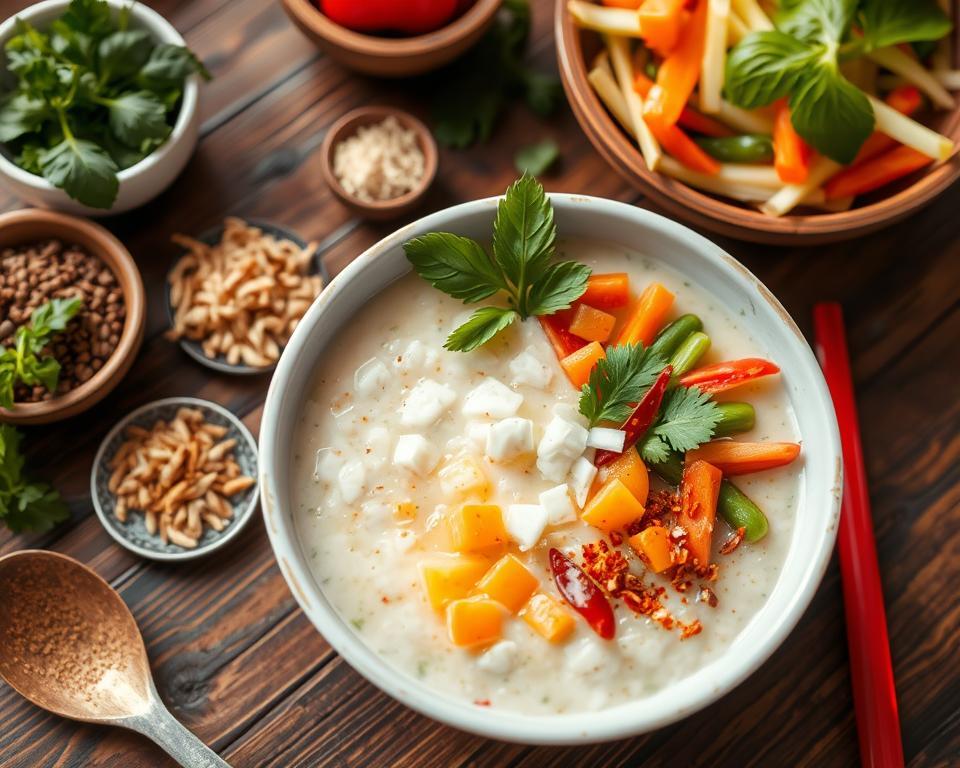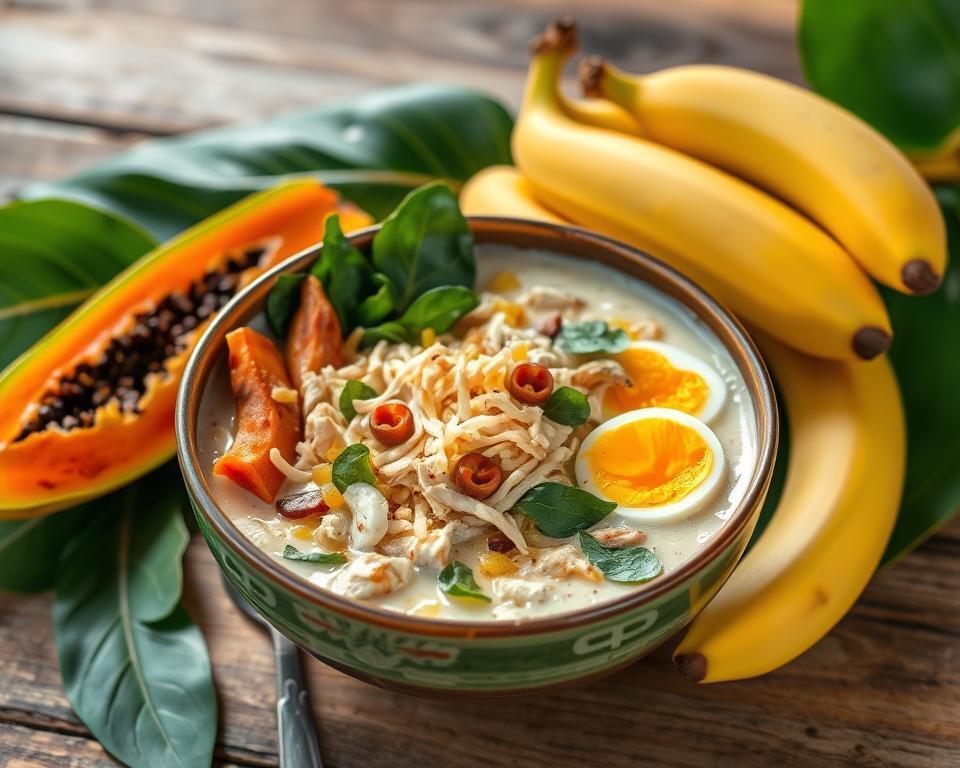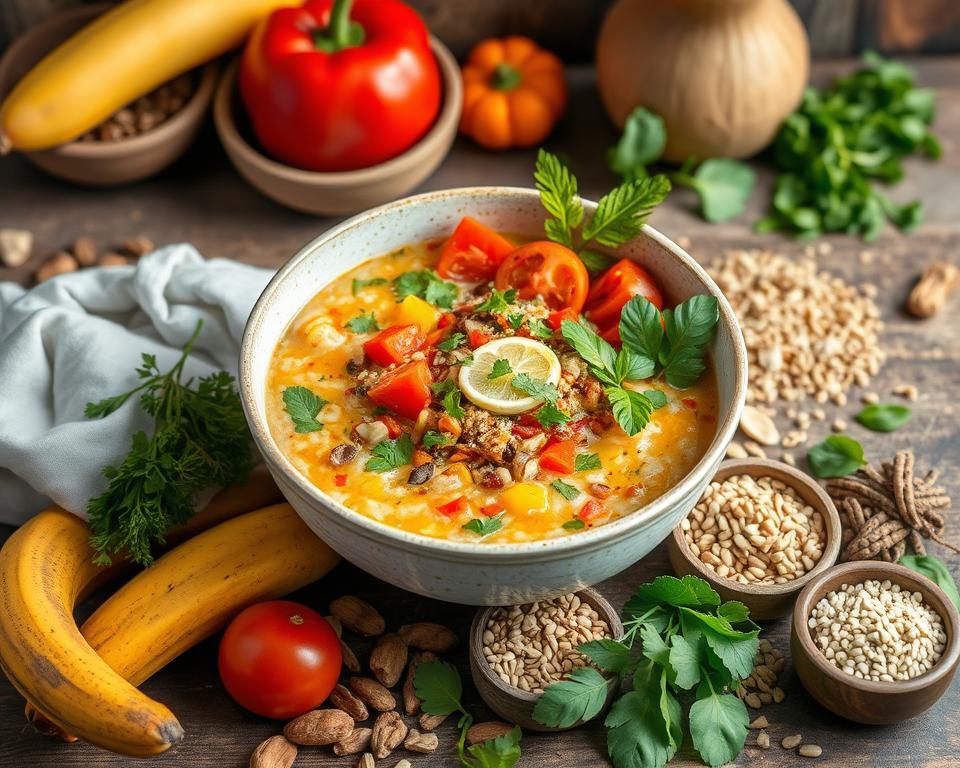Spicy Manado Chicken: Resep Ayam Rica-Rica Manado
As I enter the bustling kitchen, the smell of spices and sizzling chicken takes me to Manado, Indonesia. I remember my grandmother's ayam rica-rica, a dish full of flavor. It was always the highlight of our family gatherings.
The mix of heat, tanginess, and herbs was irresistible. Today, I'm excited to share how to make this Manado classic at home.
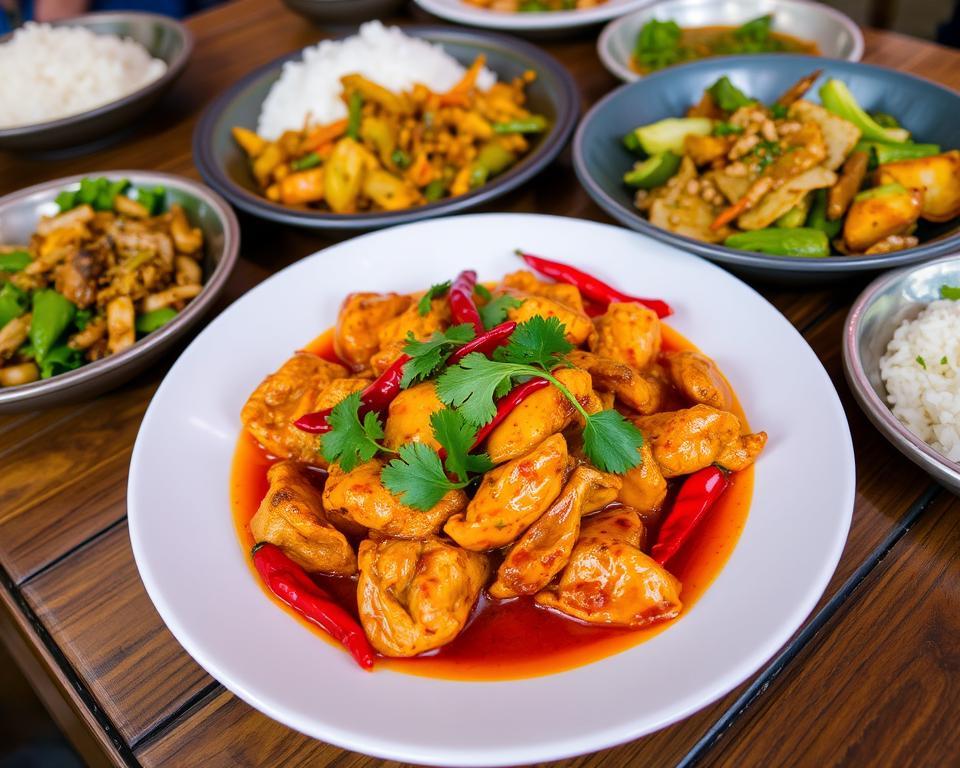
Key Takeaways
- Discover the bold and authentic flavors of Manado cuisine with this spicy chicken recipe
- Learn the origins and history of the beloved ayam rica-rica dish
- Master the key ingredients and techniques to create a truly mouthwatering Manado-style chicken
- Explore different variations and serving suggestions to personalize this dish.
- Unlock the health benefits of the vibrant spices and herbs used in ayam rica-rica
What is Ayam Rica-Rica Manado?
Ayam rica-rica Manado is a favorite chicken dish from Manado, North Sulawesi, Indonesia. It's known for its bold, spicy flavors. This makes it a highlight among Indonesia's many cuisines.
Origin and History of the Dish
The dish comes from the Minahasa people of Manado. They simmered chicken in a spicy sauce. This sauce is made with chilies, lemongrass, and other fragrant ingredients.
Key Ingredients and Flavors
The dish's flavor comes from red chilies, lemongrass, and the Manado spice blend, "Bumbu Masak." This spice paste includes chilies, shallots, garlic, ginger, and more. It creates a unique taste.
The chicken is simmered in the spicy sauce until it becomes tender. It absorbs the bold, fragrant flavors. The result is a spicy-sweet dish that showcases Manado cuisine and North Sulawesi food traditions.
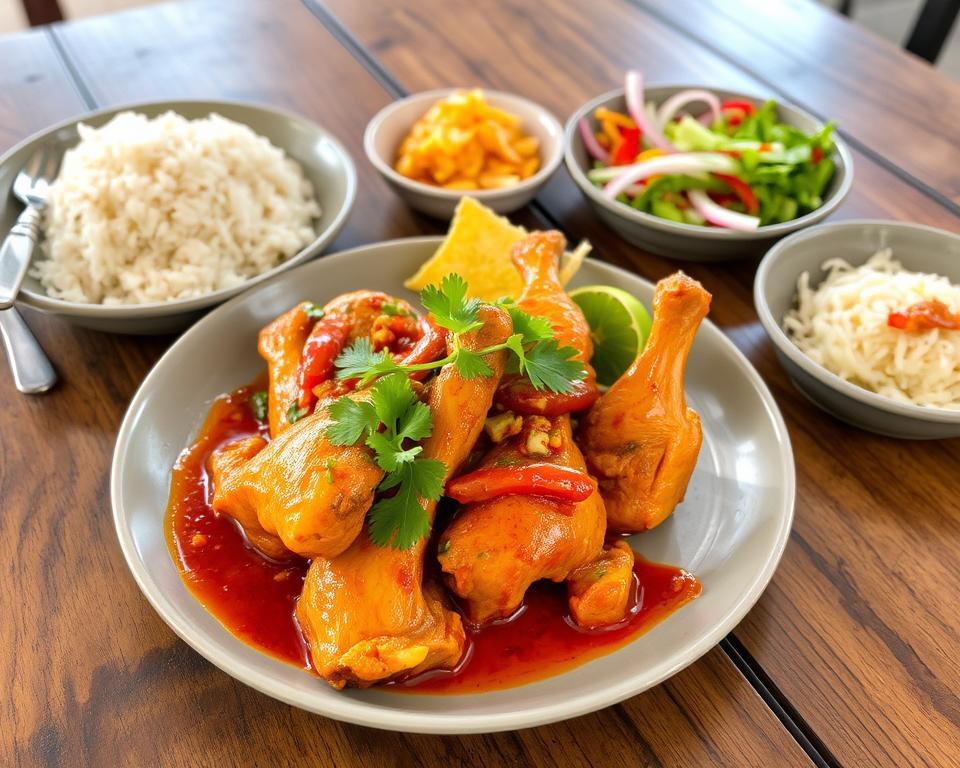
Ayam rica-rica Manado is a favorite Indonesian spicy chicken dish. It's loved in many homes and restaurants, not just in Manado. Its ayam rica-rica origins and the Manado spice blend make it unforgettable.
Resep Ayam Rica-Rica Manado: Step-by-Step Guide
Learn how to make an authentic ayam rica-rica, a favorite spicy Indonesian chicken dish from Manado. This recipe is easy to follow. It teaches you how to make the bold, fragrant flavors of this Manado chicken recipe at home.
To start, prepare the chicken. Cut the chicken into bite-sized pieces and marinate them in lime juice, garlic, and salt. Allow it to rest for 30 minutes to absorb the flavors.
Now, make the spicy Rica-Rica paste. Blend chili peppers, shallots, garlic, ginger, and lemongrass until smooth. This paste is key to the authentic Manado cooking experience.
- Heat oil in a large skillet or wok over medium-high heat.
- Add the marinated chicken pieces and sear until they are golden brown on all sides.
- Stir in the Rica-Rica paste and cook for 2-3 minutes, letting the flavors mix.
- Pour in the coconut milk and chicken broth, then bring it to a simmer.
- Reduce heat to low, cover, and let the ayam rica-rica simmer for 20-25 minutes. This ensures the chicken is fully cooked and the sauce thickens.
- Finally, season with kaffir lime leaves, basil, and a squeeze of lime juice to add brightness to the dish.
With this simple recipe for ayam rica-rica, you can enjoy Manado's bold, spicy flavors at home. Serve the Manado chicken over steamed rice for a complete meal.
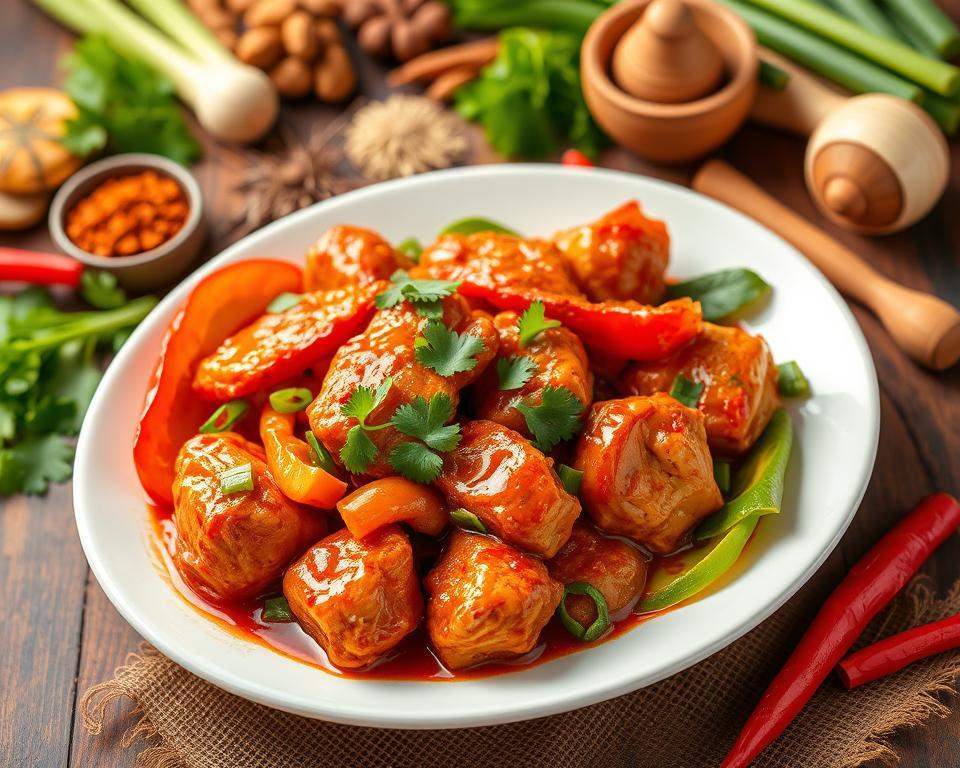
Variations and Serving Suggestions
The classic ayam rica-rica from Manado is loved by many. But, there are many creative twists on this Indonesian chicken dish found across the archipelago. These variations use unique local ingredients and cooking methods. They also offer ideas for serving ayam rica-rica with other dishes and sides, making a complete Manado-inspired meal.
Regional Twists on the Classic Recipe
Chefs and home cooks across Indonesia have made their own versions of ayam rica-rica. They add regional flavors and ingredients:
- Ayam Rica-Rica Jawa - This Javanese version uses turmeric, galangal, and lemongrass for a stronger aroma.
- Ayam Rica-Rica Padang - The Padang version is spicier, with chili paste and kemangi (lemon basil).
- Ayam Rica-Rica Sulawesi - From Sulawesi, this version might include candlenut, torch ginger, and torch ginger flower.
These ayam rica-rica variations show the diversity of Indonesian chicken dishes. They also highlight how regional recipes can adapt to local Manado cuisine.
When serving ayam rica-rica, pair it with steamed white rice, nasi uduk (coconut rice), or ketupat (rice cakes) to enjoy the sauce. Serve it with fresh vegetable sides like lalapan (raw veggies) or a simple urap (vegetable salad). This makes for a balanced and nutritious Manado chicken meal.
Health Benefits of Ayam Rica-Rica Manado
Ayam Rica-Rica Manado is not just tasty; it's also good for you. It has chili peppers, lemongrass, and ginger. These ingredients are known for fighting inflammation and boosting your immune system.
The chili peppers in this dish are full of capsaicin. This helps reduce pain and discomfort from many health issues. Lemongrass also has antibacterial and antifungal properties. It can help keep your gut healthy and your immune system strong.
Ginger is a key part of ayam rica-rica. It's known for reducing inflammation and fighting oxidative stress. It can also help with digestion and may improve heart health. Adding this Indonesian dish to your meals can make your taste buds happy and your body healthy.












